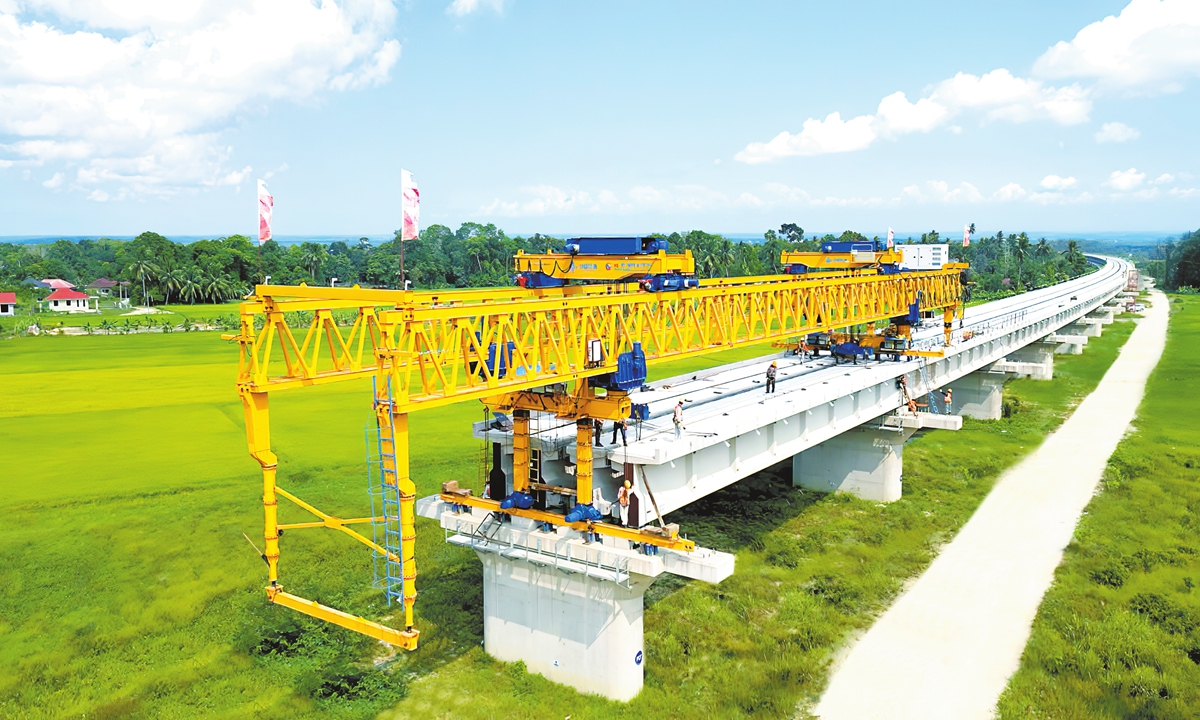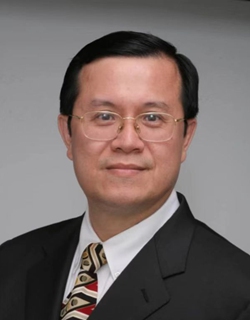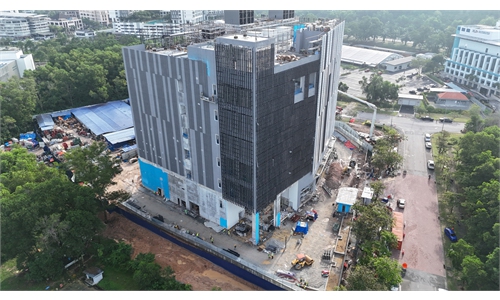
A view of a T-beam installation work of the East Coast Rail Link in Malaysia. File photo: Courtesy of China Communications Construction Co
Editor's Note:
During his recent three-day state visit to Malaysia, Chinese President Xi Jinping put forward a three-point proposal on building a high-level strategic China-Malaysia community with a shared future when meeting with Malaysian Prime Minister Anwar Ibrahim. President Xi's state visit to Malaysia signifies the maturity of mutual political trust following the important consensus reached on building a China-Malaysia community with a shared future in 2023 by the two sides, Ong Tee Keat (OTK), president of the Belt & Road Initiative Caucus for Asia Pacific and former Malaysian minister of transport, told Global Times (GT) reporter Li Aixin in an interview.
GT: What are your observations and understanding of President Xi's recent visit? What significance does this visit hold for Malaysia and other Southeast Asian countries?
OTK: President Xi's state visit to Malaysia signifies the maturity of mutual political trust following the important consensus reached on building a China-Malaysia community with a shared future in 2023 by the two sides. It exemplifies a successful model of China's enduring neighborhood diplomacy, which is rooted in amity, sincerity, mutual benefit and inclusiveness.
From the Chinese perspective, the success of its neighborhood diplomacy is pivotal to the development across the entire region of over 2 billion people. It provides a stable environment for the Southeast Asian neighbors to address their developmental priorities in pursuit of common prosperity promised by the Belt and Road Initiative (BRI). This will in turn bring about peace dividends that help stabilize the region in the interests of all parties. Simply put, both prosperity and peace are mutually reinforcing. The endeavor is a process of symbiosis.
GT: In November 2024, Prime Minister Anwar stated in an interview that the building of a Malaysia-China community with a shared future has reached new heights. How do you interpret these "new heights"?
OTK: The elevation of Malaysia-China's cooperation from the comprehensive strategic partnership in 2013 to reaching an important consensus on building a China-Malaysia community with a shared future in 2023 is an upward progression of the bilateral ties which befits the description of "new heights."
The evolving scenario also witnesses remarkable growth in the width and depth of the China-Malaysia bilateral ties. This goes beyond mere economic interests, as mutual visa-free visits are envisaged to further enrich the dimension of people-to-people connectivity, paving the way for more in-depth cultural engagement and interaction. All of this stems from the aspirations of neighborhood diplomacy.

Ong Tee Keat. Photo: Courtesy of OTK
GT: You have written that China's neighborhood diplomacy has become a model of amity, sincerity, mutual benefit and inclusiveness partnership. Could you elaborate on this view?
OTK: The practice of principles entailed in Chinese neighborhood diplomacy largely lies in actions vis-a-vis narratives of communication. The roll-out of BRI alongside the ideal of building a community with a shared future is inseparable from this diplomacy. The principle of amity, sincerity, mutual benefit and inclusiveness entailed in China's neighborhood diplomacy stands out as a breath of fresh air against the global backdrop of pervasive Western geopolitical diplomacy which is largely interest-driven in the zero-sum perspective. No aid has ever been granted without attached conditionalities. In stark contrast, the Chinese spirit of good neighborliness is always guided by a symbiotic broad outlook characterized by regional inclusivity and collective interests in essence.
The nuanced actions of China's neighborhood diplomacy lie more in its amenability and flexibility to suit the domestic concerns of its BRI partner countries like Malaysia. A case in point is the East Coast Rail Link (ECRL). China demonstrated flexibility and amenability to keep the project on track. This, in itself, is a manifestation of neighborhood diplomacy.
Alongside this, China's capacity-building initiatives under the BRI framework, ranging from the post-pandemic training for public health personnel to vocational training for youths, leave the footprints of neighborhood diplomacy that endears China to the social fabric of ASEAN member states.
In reality, ASEAN, being a regional bloc comprising 10 member states, has to accommodate the diverse priorities and aspirations of all member states which are holding respective bilateral ties of varying degrees of diplomatic intimacy with China. Yet, by and large, China-ASEAN ties have been progressing steadily and positively, and are currently at their best, albeit not without challenges.
Amid the regional dynamics impacted by the global transformations, the China-ASEAN partnership stands out as a role model of multilateral cooperation across the Asia-Pacific region, if not the world. The success recipe lies not in aid grants as were offered by the West, but largely being driven by the neighborhood diplomacy which is rooted in the ideal of building a community with a shared future.
GT: China has been attaching great importance to building a community with a shared future with neighboring countries. Which specific ideas and approaches for "building a shared future with neighboring countries" resonate most with you?
OTK: Building a community with a shared future with neighboring countries reflects the macro wisdom of intertwining one's interests with those of the entire neighborhood, which will naturally evolve into a shared destiny for the region.
At the height of the COVID-19 pandemic, the Chinese proactiveness in dispatching medical supplies and vaccines to neighboring partners remains unforgettable to me. That has later evolved into the "Health Silk Road," which serves as an institutional cornerstone for China-ASEAN cooperation in public health governance.
GT: China also proposed to build a "peaceful, safe and secure, prosperous, beautiful and amicable" home together with ASEAN countries. How does this vision align with Malaysia's development philosophy?
OTK: This ideal encapsulates the various initiatives in addressing common concerns in non-traditional security and people-to-people engagement, alongside achieving common development and prosperity, following the fostering of China-ASEAN comprehensive strategic partnership. This is set to pave the way for the ultimate realization of building the China-ASEAN community with a shared future. Generally, it aligns with Malaysia's developmental priorities though with different nomenclature in practice.
GT: The high-quality BRI cooperation is seen as a key platform for building a community with a shared future with neighboring countries. Malaysia was one of the earliest supporters of BRI. You have previously stated that the benefits of the BRI far outweigh the so-called "freedom values" pushed by Western countries. Could you elaborate further on this point?
OTK: The so-called shared values of "liberal democracy" merely constitute the geopolitical toolkit for the collective West. The rallying cry of "democracy versus authoritarianism" was solely intended to stifle China's rapid growth in global influence. It rings hollow to the developing countries in ASEAN which aspire to have their developmental priorities fulfilled.
In comparison to the BRI, the Joe Biden administration's Indo-Pacific Economic Framework for Prosperity didn't provide ASEAN member states, including Malaysia, with any wider US market access or tariff reduction. Additionally, the Partnership for Global Infrastructure and Investment initiated by the G7 has yet to launch a single project to address the bloc's infrastructure needs.



